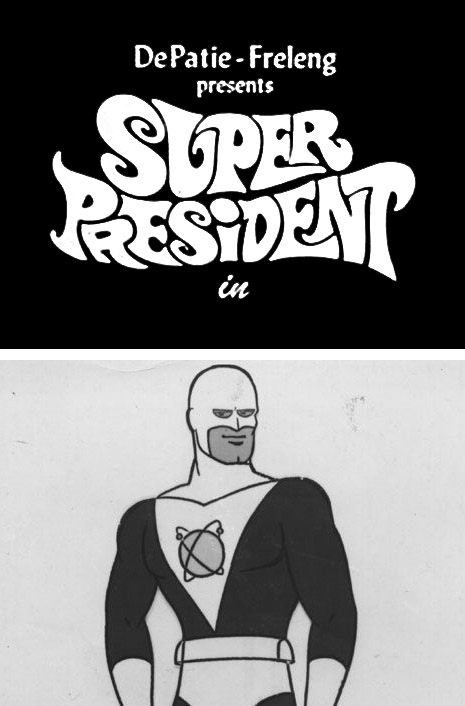
As much as I relish the inherent entertainment value of a potential Trump vs Sanders showdown/battle-for-the-soul-of-a-nation next year, I feel like America™ really needs a president like James Norcross. Silver-haired, square-jawed, dapper, and resolute, his clear-sighted judiciousness could unite this fractured nation, while his ability to alter his body’s molecular structure could protect us from a perilous world full of appalling ethnic stereotype supervillains.
That’s pretty dumb, isn’t it? But it was the actual premise of a short-lived 1967 TV cartoon called Super President. Produced by DePatie-Freleng, the animation studio best known for the Pink Panther film credit sequences and the cartoon series that spun off from them, Super President’s premise was a stretch, even for a cheaply produced children’s superhero show. The viewer was asked to suspend disbelief that the President of the United States could possibly have time to maintain a secret crimefighter double life, that his batcave-ish lair underneath the White House (to which the series always refers as the “Presidential Mansion” for some reason) could possibly go unnoticed, and that the nom de heroics “Super President” wasn’t kind of a huge screaming giveaway that he was, you know, THE PRESIDENT. Yet only the requisite sidekick/advisor/character who needs rescuing a lot Jerry Sayles knew Norcross’ secret.

There was no way this was going to last. Even if the show wasn’t howlingly dumb (stupider shows have lived long and vigorous lives), I can’t imagine the portrayal of a dashing, indomitable, gracefully-aging POTUS so soon after the Kennedy assassination didn’t sting at least a little—maybe Norcross was intended as a wishful-thinking alternative to the disappointing Lyndon Johnson? It probably wan’t that deep. Watching it almost 50 years after its creation, it’s hard to shake off the values dissonance inherent in its depictions of its antagonists. Offensive portrayals of non-Euro characters were mighty common back then (Hanna-Barbera holds up especially poorly on that count; Jonny Quest for one seems embarrassingly colonialist by today’s standards, but few of their titles were free of non-white representations that don’t seem deeply embarrassing today) but some of the portrayals here are around the bend even for the ‘60s.
Continues after the jump…





